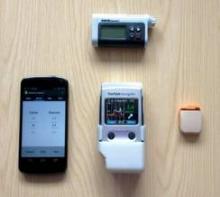SAN FRANCISCO – Unsupervised home use of a closed-loop insulin delivery system by patients with type 1 diabetes proved to be feasible and acceptable to patients and seemed to improve glucose control in two small prospective, randomized crossover studies.
The results move development of a potential artificial pancreas one step forward, though much work remains before one ever becomes commercially available.
Both of the multicenter European studies of insulin-dependent adults with type 1 diabetes – one with 24 participants and the other with 17 participants – compared the same experimental closed-loop insulin delivery system (the FlorenceD2 system) with a control treatment that used sensor-augmented insulin pump therapy.
In one study of overnight use, patients using the closed-loop system spent a mean of 53% of nights (midnight to 7 a.m.) with their glucose levels in the target range of 3.9-8.0 mmol/L (70-144 mg/dL), compared with 39% of nights while on the control therapy, a significant difference. In the other study of both day and night use, glucose levels were in the target ranges (3.9-10 mmol/L during the day or 3.9-8 mmol/L at night) for 73% of days and 48% of nights on the closed-loop system, significantly longer than with the control treatment (65% and 35%, respectively).
Investigators reported the findings in separate presentations at the annual scientific sessions of the American Diabetes Association.
The 24-patient night-use study randomized patients to the intervention or control therapy for 4 weeks, then had them switch to the other therapy for 4 weeks. Before taking the closed-loop system home, patients spent one night at a clinical research center for training and to assess their competency to use the automated system.
The proportion of nighttime with hyperglycemia (glucose levels above the 144 mg/dL upper limit of the target range) was significantly lower while on the closed-loop system (44%) than on the control therapy (57%), reported Dr. Hood Thabit of the University of Cambridge (England) and his associates. The proportion of nighttime with hypoglycemia did not differ significantly between groups.
Mean overnight glucose levels were significantly lower while on the closed-loop system (148 mg/dL) than on the control therapy (162 mg/dL), as were mean 24-hour glucose levels (157 mg/dL vs. 167 mg/dL, respectively), the intention-to-treat analysis showed.



